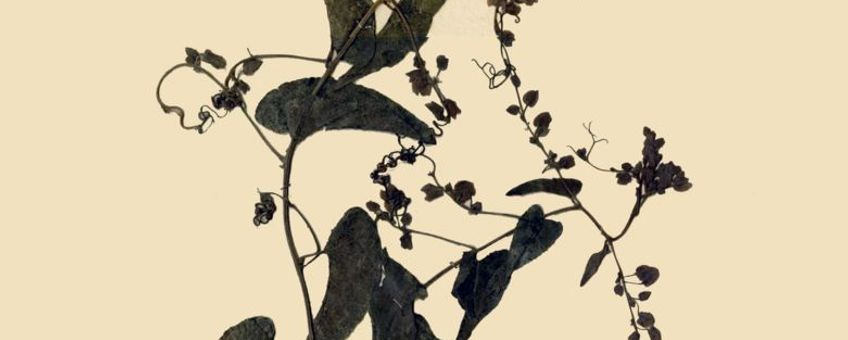
Naturalis ontrafelt veranderingen in Caribische biodiversiteit
Bericht uitgegeven door Dutch Caribbean Nature Alliance (DCNA) [land] op [publicatiedatum]
De biodiversiteit van het Caribisch gebied, zowel op het land als in de zee, verandert voortdurend, onder andere als gevolg van menselijke activiteiten. Om de huidige veranderingen en onderliggende processen te begrijpen en voorspellingen te kunnen doen over de toekomst is het belangrijk om te weten welke soorten er vroeger in het gebied voorkwamen. In het Naturalis Biodiversity Center in Leiden zijn verschillende Caribische collecties uit verschillende perioden bij elkaar gebracht. Samen vormen ze een mooi archief om de verandering in soortensamenstelling gedurende de afgelopen eeuw te onderzoeken. Zo kunnen de onderzoekers bijvoorbeeld achterhalen wanneer invasieve soorten voor het eerst opdoken, en andere soorten uitstierven.
Lees verder in het Engels...
Understanding biodiversity change in the Caribbean is a hot topic. In order to understand current turnover, to identify processes involved and to make predictions about the future of Caribbean biota, it is imperative to know what the biodiversity on and around the islands was like in the past. The collections that have been brought together in the Naturalis Biodiversity Center contain a rich, and mostly unexplored archive of past Caribbean biodiversity.

Both terrestrial and marine ecosystems in the Dutch Caribbean are subject of change due to human-mediated processes. Coral reefs suffer from pressures like bleaching, development of coastal areas, overfishing and tourism and terrestrial ecosystems suffer from overgrazing and expansion of urban areas. Furthermore, the moist ecosystems of the two volcanic islands of Saba and St. Eustatius are susceptible to increasing aridity as is predicted by climate change scenarios.
In Naturalis, Leiden, important collections are housed from the islands that give insights into past species occurrence. These include paleontological collections that give insights into Quaternary vertebrate species (from cave fissure fills) or the presence of mollusk and coral species from raised reefs. But more important are historical collections, mostly dating back to the early and mid-20th century. The Wagenaar Hummelinck collection is particularly important and constitutes a very rich collection of mostly shallow marine and terrestrial aquatic biota, along with some terrestrial biota.
 Another important collection is the herbarium, which is actually by far the largest botanical collection of the six islands worldwide. Naturalis houses ca. 10,000 specimens from Saba, St. Eustatius and St. Maarten, among which the original plants collected by Isaac Boldingh around 1908 published in his Flora of the Dutch West Indian Islands (1913). Recently acquired botanical vouchers of these islands include duplicates of the New York Botanical Garden made in 2007-2008 for their project Plants and Lichens of Saba and St. Eustatius and a further 10,000 specimens from Curaçao, Aruba and Bonaire are present. These include the original Boldingh vouchers made around 1908 for his Flora of Curaçao, Aruba and Bonaire (1913), the many type specimens of Melocactus described by Suringar and Valkenier-Suringar, as well as all Arnoldo’s and Stoffers’ collections from both Windward and Leeward islands for their Flora of the Netherlands Antilles (1963-1984). Naturalis also houses all collections made by Van Proosdij from the 1990s onwards for his Zakflora (latest edition 2012). Presently, only 10% of these herbarium collections is digitised, but it is expected that in 2014 information and digital images of all collections will become available online.
Another important collection is the herbarium, which is actually by far the largest botanical collection of the six islands worldwide. Naturalis houses ca. 10,000 specimens from Saba, St. Eustatius and St. Maarten, among which the original plants collected by Isaac Boldingh around 1908 published in his Flora of the Dutch West Indian Islands (1913). Recently acquired botanical vouchers of these islands include duplicates of the New York Botanical Garden made in 2007-2008 for their project Plants and Lichens of Saba and St. Eustatius and a further 10,000 specimens from Curaçao, Aruba and Bonaire are present. These include the original Boldingh vouchers made around 1908 for his Flora of Curaçao, Aruba and Bonaire (1913), the many type specimens of Melocactus described by Suringar and Valkenier-Suringar, as well as all Arnoldo’s and Stoffers’ collections from both Windward and Leeward islands for their Flora of the Netherlands Antilles (1963-1984). Naturalis also houses all collections made by Van Proosdij from the 1990s onwards for his Zakflora (latest edition 2012). Presently, only 10% of these herbarium collections is digitised, but it is expected that in 2014 information and digital images of all collections will become available online.
The collections in Leiden are the result of a merger of the National Herbarium of the Netherlands (NHN), Naturalis and the Zoological Museum Amsterdam (ZMA). For the first time all important Caribbean collections in the Netherlands are housed in a single institute where around 100 scientists are working on biodiversity. Some of the collections have not been touched since they were shipped to the Netherlands long ago. The collections provide a great archive to study past biodiversity and to assess species distribution changes over the past century. They are the most tangible evidence of biodiversity in the past and can answer questions about, for example, when an invasive species was first introduced or when a specific type of rice rat (Oryzomyini) went extinct. The historical collections of Naturalis offer the opportunity to understand the dynamics of the coming and going of species in the Dutch Caribbean. The new constitutional arrangement of the Kingdom and the new interest in the Dutch Caribbean biodiversity offers great new opportunities to utilise the large and rich collections of Naturalis for biodiversity research on the six islands.
Read more about the Caribbean biodiversity in the article The Flora of Aruba, Bonaire and Curaçao in DCNA's newsletter BioNews May 2013 edition, DCNA.
Text: Frank Wesselingh, Tinde van Andel, André van Proosdij, Naturalis Biodiversity Center
Pictures: Andre van Proosdij, Tinde van Andel
Bron: BioNews May 2013 edition, DCNA
Nederlandse inleiding: Sara Mulder, De Natuurkalender
